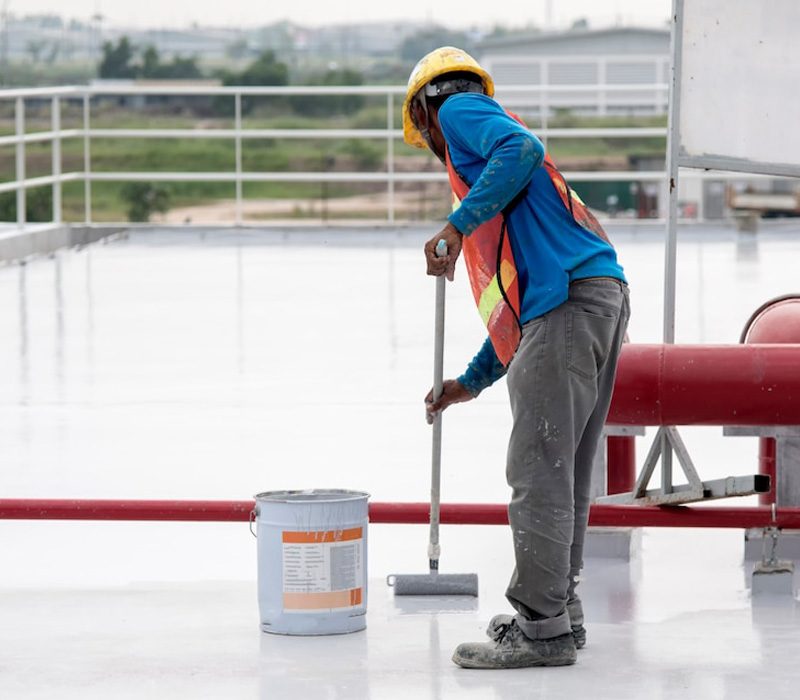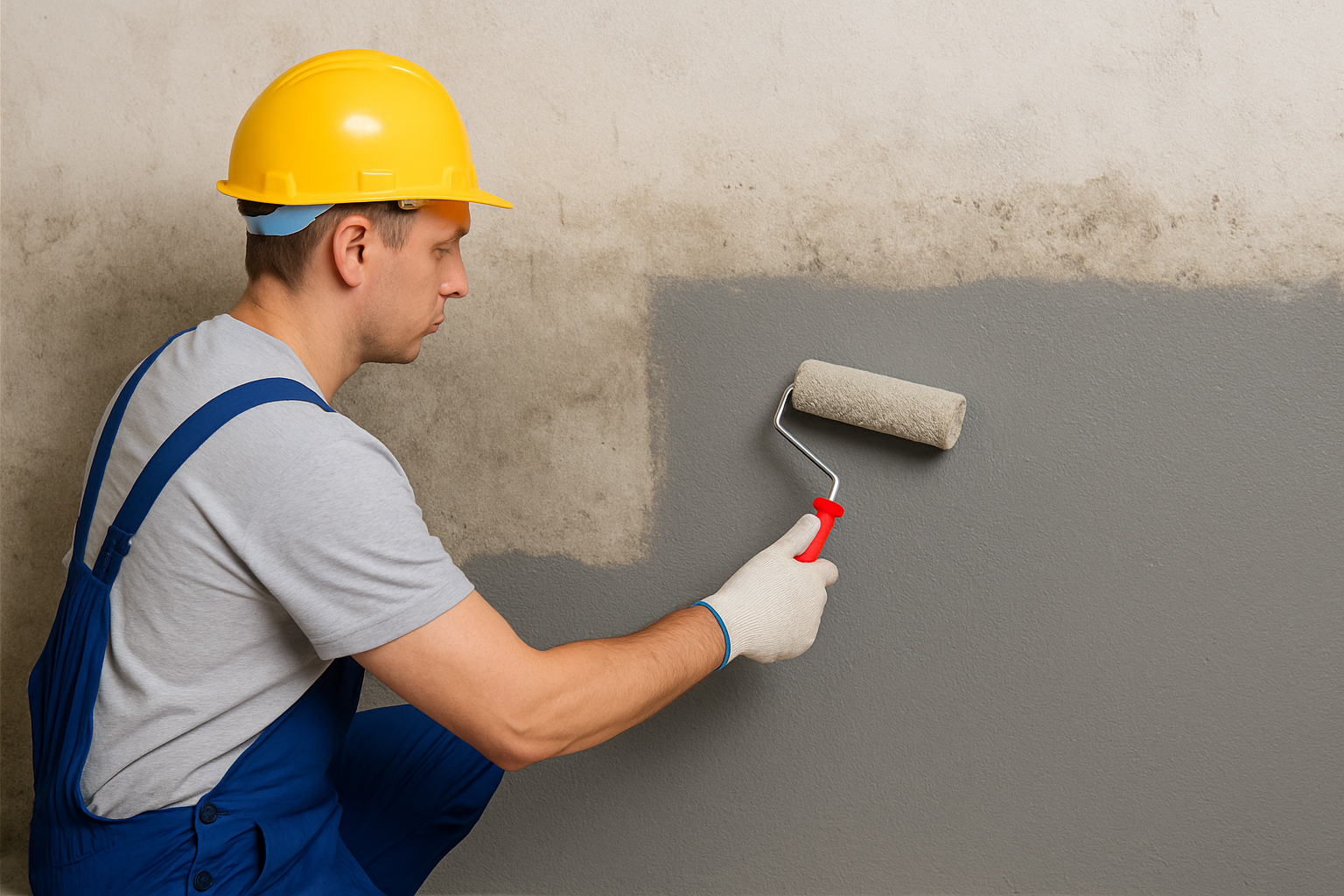 Automated Blog-to-Social Sharing – Publish Once. Appear Everywhere!
Automated Blog-to-Social Sharing – Publish Once. Appear Everywhere!
What are some expert tips for long-lasting concrete repairs?
Written by Index Emirates » Updated on: June 17th, 2025 117 views

Concrete is a durable and versatile material used in many construction projects. However, over time, it can develop cracks, spalling, and other forms of damage due to various factors such as weather conditions, heavy loads, and improper installation. To ensure that your concrete repairs last as long as possible, it's essential to follow expert tips and techniques. In this blog, we'll delve into the best practices for achieving long-lasting concrete repairs, especially in a demanding environment like Dubai.
Introduction
Concrete is known for its strength and longevity, making it a popular choice for construction. However, like all materials, it is not immune to wear and tear. Concrete structures in Dubai face unique challenges due to the extreme heat and occasional heavy rains, which can accelerate the deterioration process. Therefore, understanding how to effectively repair concrete is crucial to maintaining its integrity and extending its lifespan.
Understanding Concrete Damage
Before diving into the repair process, it's important to understand the types of damage concrete can sustain. Common issues include cracks, which can be either surface-level or deeper; spalling, where the surface of the concrete flakes away; and structural damage caused by heavy loads or foundational shifts. Each type of damage requires a different approach to repair, so identifying the problem accurately is the first step toward a long-lasting fix.
Types of Concrete Damage
Cracks: These can range from hairline cracks, which are often purely cosmetic, to deeper structural cracks that can compromise the integrity of the concrete.
Spalling: This occurs when the surface layer of the concrete begins to flake off, often due to freeze-thaw cycles or exposure to harsh chemicals.
Scaling: Similar to spalling, scaling involves the surface peeling away but is typically due to poor finishing techniques or inadequate curing.
Discoloration: While not necessarily a structural issue, discoloration can be a sign of water penetration or chemical reactions within the concrete.
Efflorescence: This white, powdery substance on the surface of the concrete indicates that water is moving through the material, bringing dissolved salts to the surface.
Causes of Concrete Damage
Understanding the underlying causes of concrete damage is crucial for effective repairs. Common causes include:
Thermal Expansion and Contraction: Temperature changes cause concrete to expand and contract, leading to cracks over time.
Water Infiltration: Water can seep into the concrete, freeze, and expand, causing cracks and spalling.
Chemical Exposure: Chemicals, such as de-icing salts, can break down the concrete surface.
Poor Construction Practices: Inadequate mixing, improper curing, and poor finishing techniques can all lead to premature concrete failure.
Heavy Loads: Excessive weight, such as heavy machinery or vehicles, can stress the concrete beyond its capacity, leading to cracks and other damage.
Preparing for Concrete Repair
Preparation is key to a successful concrete repair. Start by thoroughly assessing the damage. This involves not only identifying the visible issues but also understanding the underlying causes. For instance, cracks may be due to thermal expansion, shrinkage, or settling of the foundation. Once the cause is identified, you can choose the appropriate repair materials. High-quality repair materials, such as epoxy or polyurethane, can provide a more durable solution compared to standard concrete mixes.
Assessing the Damage
Carefully inspect the concrete surface to determine the extent and type of damage. Use tools like a hammer and chisel to probe the area and identify weak spots. For larger structures, consider hiring a professional to conduct a thorough assessment, including potential internal damage that might not be visible on the surface.
Choosing the Right Materials
Selecting the right materials for the repair is crucial for longevity. Common repair materials include:
Epoxy Resins: Ideal for filling cracks, as they provide a strong bond and are resistant to water and chemicals.
Polyurethane Foams: Useful for sealing cracks and joints, as they expand to fill gaps and provide a flexible, durable seal.
Cementitious Repair Mortars: Suitable for larger repairs, these materials are designed to bond well with existing concrete and provide a similar appearance and strength.
Fiber-Reinforced Polymers (FRPs): These materials can be used to reinforce weakened areas, providing additional strength and durability.
Gathering Necessary Tools and Equipment
Having the right tools and equipment on hand will make the repair process more efficient and effective. Essential tools include:
- Hammer and Chisel: For removing loose or damaged concrete.
- Wire Brush or Pressure Washer: To clean the surface thoroughly before applying repair materials.
- Mixing Tools: Such as a drill with a mixing paddle for preparing repair mortars or resins.
- Trowels and Putty Knives: For applying and smoothing repair materials.
- Protective Gear: Including gloves, safety glasses, and masks to protect yourself during the repair process.
Cleaning and Preparing the Surface
Before you begin any repair, ensure the damaged area is clean and free of debris. Use a wire brush or a pressure washer to remove loose particles, dirt, and any previous repair materials that have failed. For stubborn grime or oil stains, a degreaser might be necessary. A clean surface allows the repair material to adhere better, ensuring a stronger bond and a more durable repair.
Removing Debris and Loose Particles
Thoroughly clean the area to be repaired. This might involve scraping away loose concrete with a hammer and chisel, followed by using a wire brush or pressure washer to remove smaller particles and dirt. Ensuring that the surface is completely clean will help the repair material adhere properly.
Ensuring a Dry Surface
Moisture can interfere with the adhesion of repair materials, so it's important to ensure the surface is dry before proceeding. Use a blowtorch or heat gun to dry the area if necessary, or simply wait for it to dry naturally. In humid environments, such as Dubai, this step is particularly crucial.
Repairing Cracks
When repairing cracks, it's crucial to choose the right filler. For small, surface-level cracks, a concrete sealant or filler might suffice. However, for deeper or structural cracks, an epoxy injection is often the best choice. Begin by widening the crack slightly with a chisel to create a V-shape. This helps the filler to penetrate deeper into the crack. After applying the filler, smooth it out with a putty knife and allow it to cure as per the manufacturer’s instructions.
Using Epoxy for Deep Cracks
Epoxy is a strong, durable material that bonds well with concrete. For deeper cracks, start by cleaning the crack thoroughly, then inject the epoxy resin into the crack using a caulking gun. Fill the crack from the bottom up to ensure no air pockets are trapped. Smooth the surface with a putty knife and allow it to cure completely, following the manufacturer’s recommendations.
Applying Sealants for Surface Cracks
For surface-level cracks, a sealant may be sufficient. Choose a high-quality concrete sealant, and apply it to the crack using a caulking gun. Smooth the sealant with a putty knife, and allow it to dry and cure according to the product instructions. This will help prevent water from entering the crack and causing further damage.
Addressing Spalling
Spalling, where the surface of the concrete flakes or chips away, can compromise the structural integrity of the concrete. To repair spalling, start by removing the damaged concrete with a hammer and chisel until you reach solid material. Then, clean the area thoroughly and apply a bonding agent to help the new concrete adhere to the old surface. Finally, apply a repair mix, smooth it out, and allow it to cure properly.
Removing Damaged Concrete
Using a hammer and chisel, carefully remove the damaged concrete until you reach solid, stable material. Be sure to remove any loose particles and dust from the area. This creates a clean, solid base for the new concrete to adhere to.
Applying a Bonding Agent
To ensure a strong bond between the old and new concrete, apply a bonding agent to the cleaned area. Follow the manufacturer’s instructions for mixing and applying the agent. This step is crucial for achieving a durable repair that integrates seamlessly with the existing concrete.
Using Repair Mixes
Choose a high-quality repair mix designed for spalling repairs. Mix the material according to the manufacturer’s instructions, then apply it to the prepared area using a trowel. Smooth the surface and shape it to match the surrounding concrete. Allow the repair to cure completely, following the recommended curing time and conditions.
Reinforcing Structural Integrity
For more significant structural repairs, such as those involving load-bearing elements, it may be necessary to reinforce the repair with steel bars or mesh. This additional reinforcement can help distribute loads more evenly and prevent future cracks. Consulting with a structural engineer can provide valuable insights into the best reinforcement methods for your specific situation.
Adding Steel Reinforcement
In cases where the concrete is structurally compromised, adding steel reinforcement can provide additional strength and stability. This may involve embedding steel bars (rebar) or mesh into the repair area. Ensure the steel is properly placed and secured before applying the repair material. The added reinforcement helps distribute loads more evenly, reducing the risk of future damage.
Consulting with Professionals
For complex repairs, especially those involving structural elements, it's advisable to consult with a structural engineer or a professional concrete repair company in Dubai. They can assess the damage, recommend the best repair methods, and ensure the repair is done safely and effectively.
Proper Curing
Proper curing is essential for the longevity of your concrete repair. Curing allows the repair material to reach its maximum strength by retaining moisture. Follow the manufacturer’s instructions for curing times and conditions. In hot climates like Dubai, it might be necessary to keep the repair area moist for a longer period to prevent it from drying out too quickly.
Keeping the Area Moist
Maintaining adequate moisture levels is crucial for the curing process. This can be achieved by covering the repair area with wet burlap or plastic sheeting, and periodically re-wetting it to prevent drying. Proper curing helps the repair material achieve its full strength and durability.
Monitoring Curing Conditions
In hot or dry climates, such as Dubai, it's important to monitor the curing conditions closely. High temperatures can cause the repair material to dry too quickly, leading to shrinkage and cracking. Consider using a curing compound or sealant to help retain moisture and control the curing process.
Preventive Measures
After completing the repair, taking preventive measures can help protect the concrete from future damage. Regular maintenance, such as sealing the concrete surface, can prevent water infiltration and reduce the risk of cracks and spalling. Additionally, avoiding the use of harsh chemicals and controlling heavy loads can extend the lifespan of your concrete structures.
Regular Maintenance
Regular maintenance is key to preventing future damage. This includes inspecting the concrete periodically for signs of wear, sealing the surface to protect against water and chemical exposure, and addressing any minor issues promptly before they become major problems.
Avoiding Harsh Chemicals
Harsh chemicals, such as de-icing salts and industrial cleaners, can break down the surface of the concrete over time. Whenever possible, use milder alternatives and clean up any spills promptly to prevent chemical damage.
Controlling Heavy Loads
Excessive weight can stress the concrete beyond its capacity, leading to cracks and structural damage. Be mindful of the loads placed on concrete surfaces, especially in areas subject to heavy machinery or vehicles. Distributing the weight more evenly or reinforcing the concrete can help prevent damage.
Conclusion
Concrete repair is a crucial aspect of maintaining the structural integrity and longevity of your concrete surfaces. By understanding the types and causes of concrete damage, preparing the surface properly, using the right materials, and following best practices for curing and maintenance, you can achieve long-lasting repairs. Whether you're dealing with minor cracks or significant structural issues, these expert tips will help you keep your concrete in excellent condition for years to come.
Note: IndiBlogHub features both user-submitted and editorial content. We do not verify third-party contributions. Read our Disclaimer and Privacy Policyfor details.
Copyright © 2019-2025 IndiBlogHub.com. All rights reserved. Hosted on DigitalOcean for fast, reliable performance.
















